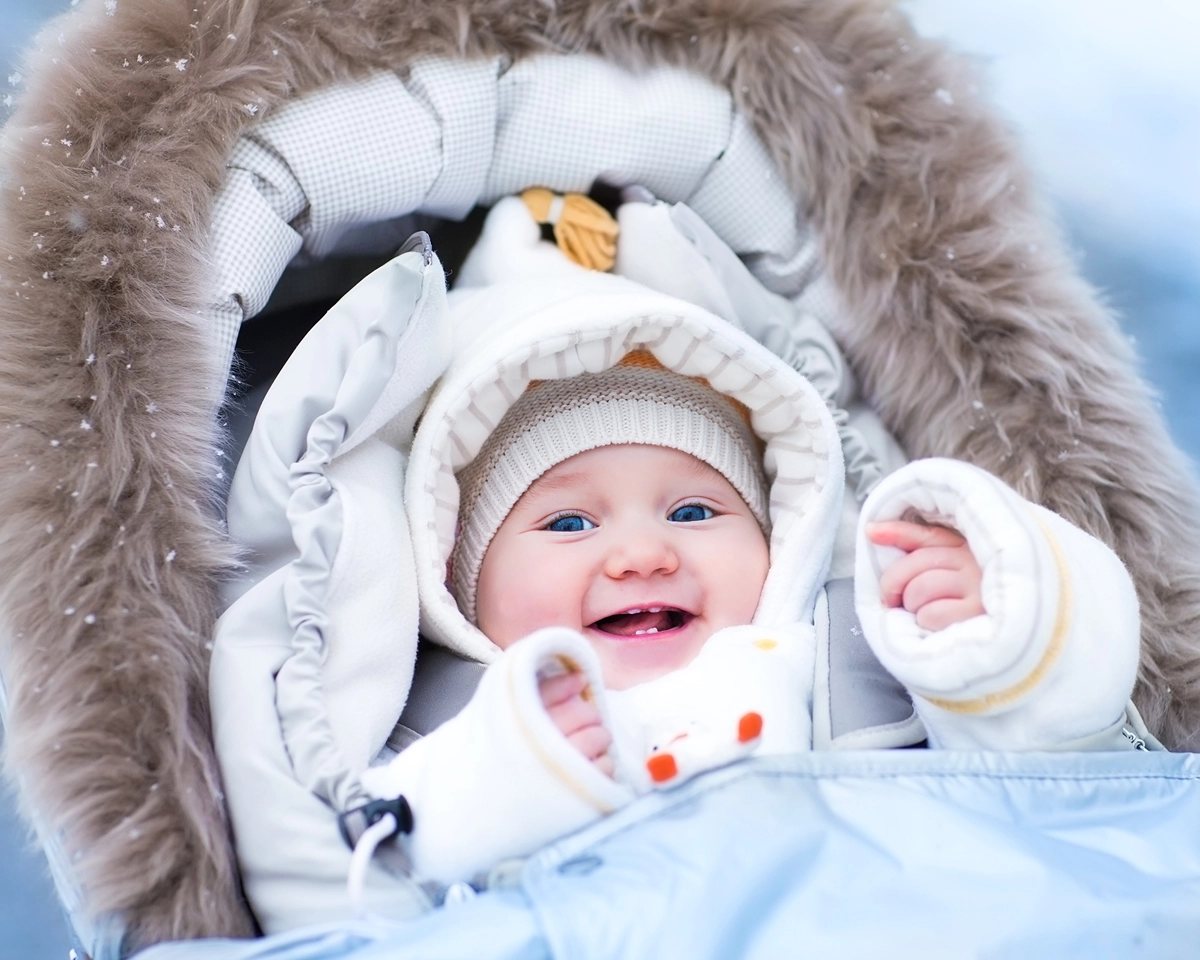Tips for dressing your baby for winter months

During the winter, when the temperatures fall and your baby requires more clothes to stay warm, it’s important to follow safety recommendations when dressing them. That’s because of Sudden Infant Death Syndrome (SIDS), the unexpected and unexplainable death of a baby under the age of 1. Often, it occurs when a baby is sleeping. In the United States, SIDS is the leading cause of death for infants, and most SIDS deaths happen between the ages of 2 and 4 months old. While the cause of SIDS is unknown, experts point to overheating as a risk factor.
To keep your baby safe, follow these guidelines.
A sleep sack is a wearable blanket that keeps your baby warm while they sleep. Sleep sacks have the added benefit of providing warmth while reducing the risk that loose blankets pose to babies. The American Academy of Pediatrics (AAP) advises parents to keep bedding like blankets out of cribs until a baby is at least 1 year old to reduce the risk of suffocation and strangulation. “There should be no blankets at all in the crib, only a sleep sack,” says Brittany Kaiser, Lead Public Educator with Safety Stop.
Using a sleep sack helps reduce the risk of SIDS, research shows. A 2019 analysis found that infant sleep sacks may be safer than any other bedding for babies. It was reported that, “For sleeping bags to be safe, they must be well made and appropriately used, which includes the correct size, TOG [Thermal Overall Grade], clothing and other bedding for bedroom temperature.”
In freezing weather, be sure your baby is kept plenty warm while spending any time outside. This might include a coat, mittens, a hat that protects their ears and a blanket in the stroller. Be on the lookout for signs of overheating, though, which may include a red face, warm skin and fussiness. Skin that feels warm to the touch is the main sign of potential overheating.
Layers are a great way to help regulate your baby's temperature and prevent overheating. Consider layering a onesie, shirt and jacket or sweater, and if your baby looks too hot, you can simply remove a layer. “Parents can dress their baby in 2-4 thin, tight-fitting layers,” says Kaiser.
While you may be inclined to keep your baby bundled up fully in the car during the winter, always put your child in their car seat without a coat. Wearing a coat in the car poses added risks in the event of a car accident. “Don’t use overly bulky clothing like a coat in the car,” advises Kaiser, “because it can make a difference with the harness not fitting snugly and then lead to ejection from the car seat.” A coat can compress in an accident, leaving space for the child to eject from the car seat. If you’re worried about the cold temperature in the car, consider warming up the car before getting into it.
Carriers that you strap to your body and put your baby in are a good way to help keep them warm because the heat from your body will warm them, too. When using a carrier during winter, be sure that your baby’s feet and head are well covered. The feet and head are areas of the body where babies lose heat most easily.
When using the carrier, make sure the baby’s breathing is not obstructed when facing you. The infant’s face should have plenty of room and shouldn’t be pressed into your clothing or your body. It’s also advised that the baby is high enough that you can kiss the top of their head and check their breathing regularly. Carrying a baby low on your body poses the risk of suffocation.
Infants require constant attention and care, but with a little bit of extra diligence, you can protect your baby from SIDS in the colder months.
- Resource